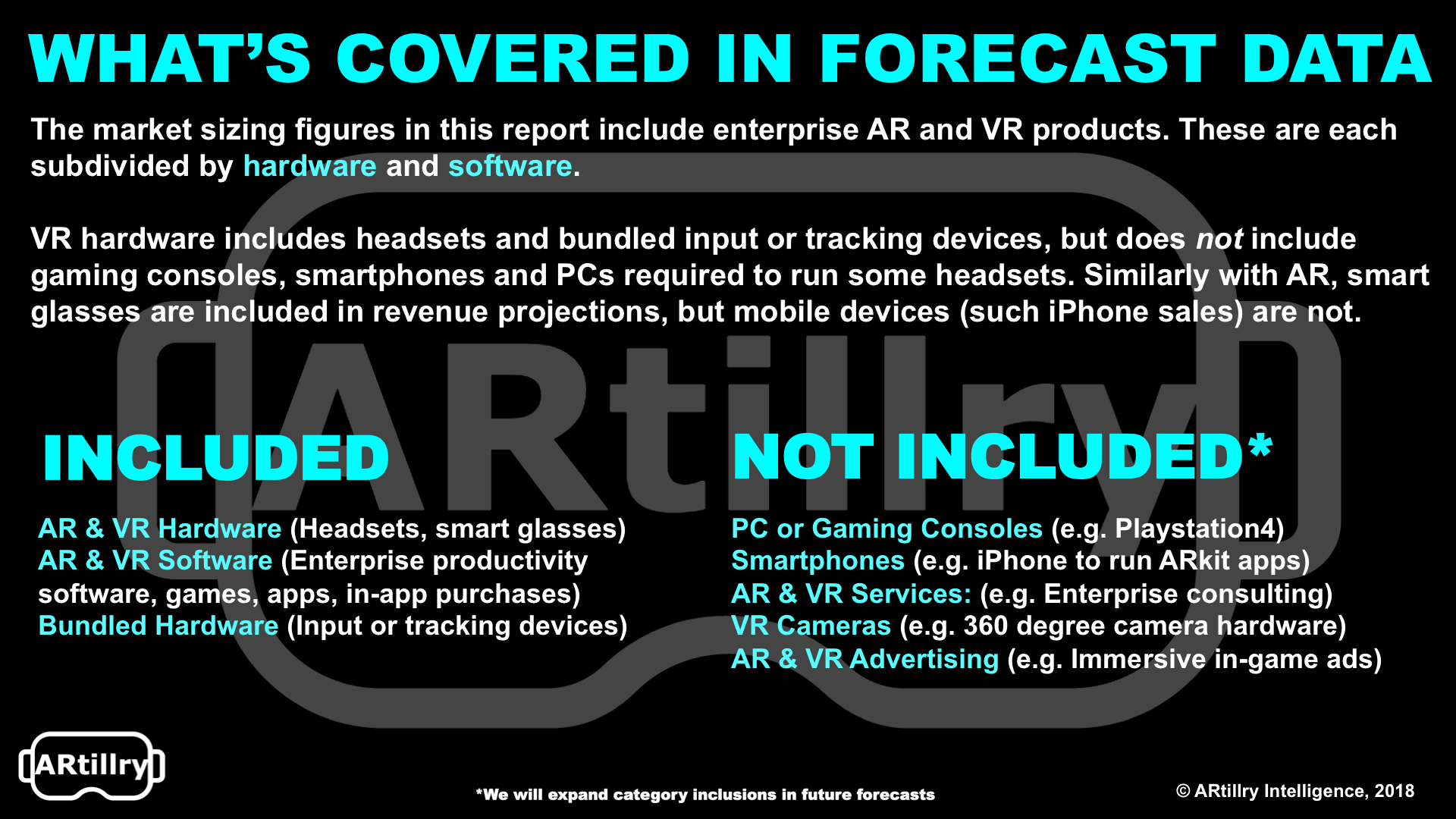This post is adapted from ARtillry's latest Intelligence Briefing: Enterprise XR: Impacting the Bottom Line. It includes some of its data and key takeaways. Subscribe to ARtillry Insights to access the full report.
The past year was volatile for XR. After an exuberant 2016, the sector’s temperature cooled when consumer hardware penetration – a key leading indicator of industry health – fell short of expectations. So attention shifted to areas of nearer-term scale: mobile and enterprise.
For enterprise (mobile is covered in a separate report) , its nearer-term opportunity is due to a greater addressable market. There are more receptive buyers in enterprise environments, due to measurable time and efficiency gains in AR-assisted job roles. This creates a clear ROI narrative.
To quantify, companies like Intel and Coca-Cola demonstrate 15-45 percent efficiency gains today. This includes time saved in assembly, sorting and maintenance functions. Given that enterprise process management generally strives for single-digit efficiency gains, this XR impact is notable.
And unlike consumer markets, where mobile devices are the near-term play, head-worn XR devices are already penetrating the enterprise. This is due to one big variable: style. AR glasses don’t yet pass consumer markets’ stylistic requirements, but that’s not an issue in the enterprise.
For all of these reasons, ARtillry Intelligence projects enterprise XR to grow from $554 million in 2016 to $39 billion by 2021, with an inflection point in 2019. Near-term revenue will be hardware- dominant as an installed base paves the way for recurring software revenue in later years.
Most of that revenue will be from AR versus VR. Though VR’s place in the enterprise will be valuable and transformative, AR’s market opportunity is larger. This is due to its breadth of applicability across enterprise functions, and pass-through vision that enables more versatility.
But despite all of these positive dynamics and fertile ground for enterprise XR, there will be challenges. As with any organizational technology adoption, there is red tape, inertia, sales cycles and the complications of system integration. As the saying goes, anything worthwhile isn’t easy.
So how will this all play out? What are enterprise XR’s benefits and proof points? What are enterprises saying and doing to indicate areas of opportunity? Who’s exhibiting best practices? And what are the biggest lessons so far? This report sets out to answer these burning questions.
Key Takeaways
XR has been heralded as the next major technological transformation. This will materialize, but later than expected.
-- Similar to the early-2000’s e-commerce bubble, XR excitement and market sizing isn’t overblown… it’s just early.
Soft consumer hardware sales have shifted attention to near-term scale and opportunity, including mobile and enterprise.
ARtillry Intelligence projects enterprise XR to grow from $554 million in 2016 to $39 billion by 2021.
-- Enterprise AR will grow from $314 million in 2016 to $35.2 billion in 2021, including a 2019 inflection point.
-- Enterprise VR will grow from $240 million in 2016 to $3.8 billion in 2021.
AR’s share results from breadth of applicability for enterprise functions, and pass-through vision that enables versatility.
-- AR will also be widely applicable across verticals including CPG, automotive and aerospace.
-- Enterprises have less stylistic and budgetary restraints than consumers, given today’s bulky and costly smart glasses.
Enterprise XR includes live AR remote assistance (assembly, maintenance), pre-authored AR guidance (sorting, maintenance), and immersive VR collaboration (training, design), among other formats.
Adoption drivers include strong ROI and operational efficiencies (time and error reduction) in functions like manufacturing.
-- Intel, Coca-Cola and others detailed in this report demonstrate 15-45 percent efficiency gains today.
-- Additional cost savings result from remote support and collaboration, which lessen travel and machine downtime.
Beyond micro-economics, enterprise AR has potential to transform workforce management
-- AR’s guided instructions or live remote assistance makes more people qualified for more jobs.
-- This unlocks enterprise efficiencies and employees’ in-house mobility, task variety and morale.
-- AR can enable experienced and valued veterans to work remotely, rather than retire or burn out from field work.
Enterprise XR benefits are counterbalanced by several challenges, most of them due to organizational inertia.
-- Like many technologies, XR will face resistance at organizational and departmental levels.
-- The first and only point of entry is often “innovation centers,” where XR is often well received but then languishes.
Tactics for overcoming hurdles include building on already-adopted systems (e.g. Android), and grassroots support.
-- Greater chance of deployment can result from advocacy within the business units proposed to use XR. Bottom-to-top organizational buy-in can create powerful demand signals that lead to real XR deployments.
-- Value propositions should go beyond bottom-line impact and be spun to address individual (and sometimes selfish) pain points of decision makers and influencers throughout the organization.
Despite challenges, there’s good news.
-- After initial adoption, subsequent XR implementations are easier to achieve, as comfort levels are gained.
-- There is evidence that sales cycles are reducing in length.
Cultural familiarity with XR will inch forward and lessen enterprise resistance – a common process in tech revolutions.
-- We’ll see step functions as companies make investments that fuel advancement, which in turn drives more investment.
Challenges will persist into 2018 but momentum and acclimation are leading towards a 2019 tipping point.
-- Enterprise XR will follow a similar adoption pattern seen in smartphone enterprise integration over the last decade.






